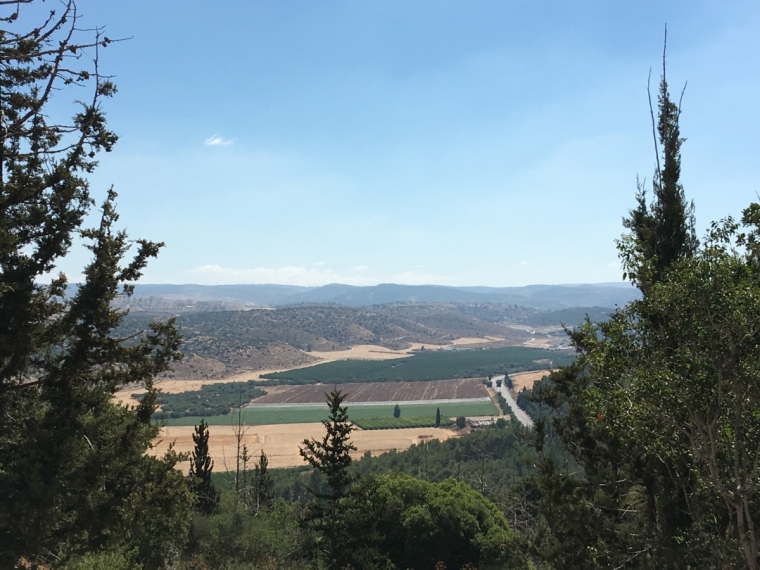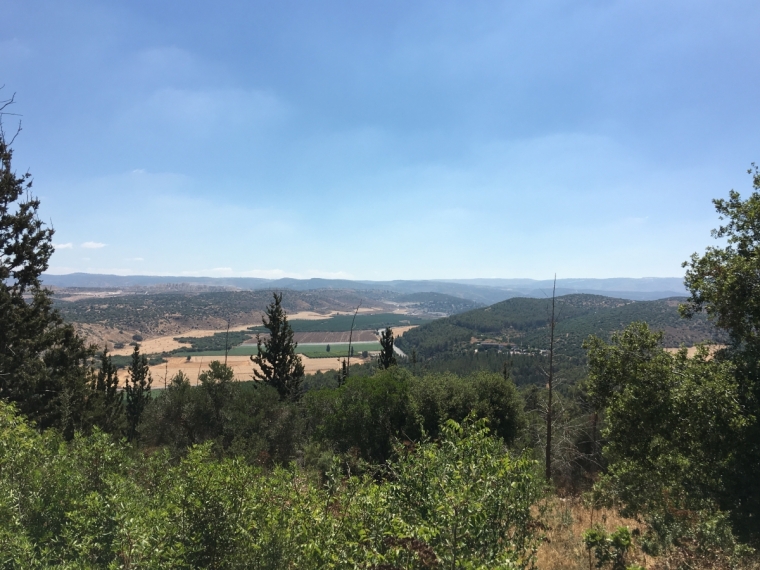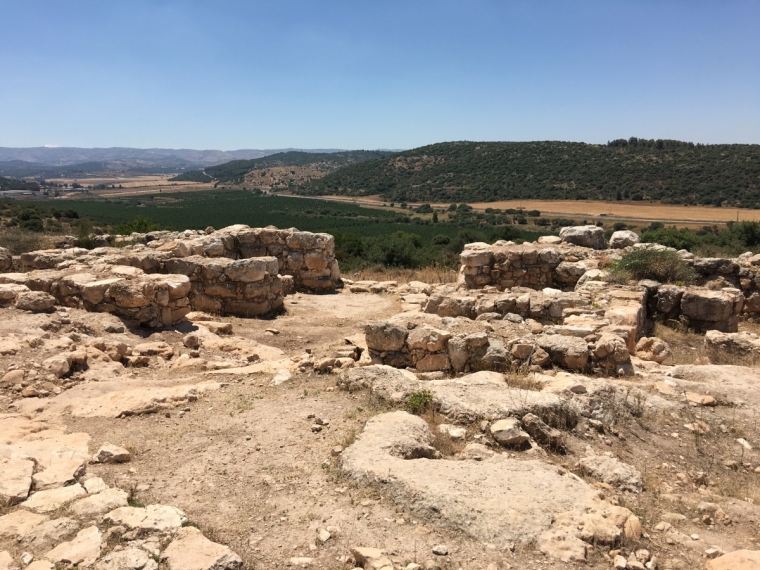THROUGH THE BIBLE: On the spot where David killed the giant Goliath

Christian Examiner continues a new series which allows readers to walk with Dr. Eric Mitchell, Associate Professor of Old Testament & Biblical Archaeology at Southwestern Baptist Theological Seminary, through some of the most important sites in the Bible. Mitchell directs the archaeological survey at Tel Gezer. Mitchell's journal entries will help readers visualize important sites like Gezer, the places where Jesus walked, and the valley where David killed the Philistine Goliath.
ELAH VALLEY, Israel (Christian Examiner) – Over the course of my career in biblical archaeology, I have taken several tour groups to Israel. One of the "must see" sites for the groups is the Elah Valley, where David met the Philistine giant Goliath in battle. Since the account of David and Goliath is of great interest to all, we always stop there.
On one trip in particular, I asked the driver to pull the bus off the highway since several from the tour group wanted to take a picture of the stream bed where David picked up his sling stones.
As we were there, and a couple of the group picked up a stone or two, a large dump truck backed up to the stream and dumped a large pile of stones in the streambed. I am not sure, but perhaps they were replacing stones taken by the many tourists picking them up as souvenirs over the years!
Biblical scholars talk of the David and Goliath account falling within a section of 1-2 Samuel called the "apology of David" (1 Samuel 16 through 2 Samuel 5). This is not an apology in the modern sense, such as "I'm sorry." It is an ancient literary genre which justifies the new king's actions in gaining the throne – even if he usurped the throne.
I posit that this apology was written to justify David's rule as king of Judah in Hebron while trying to bring the northern tribes over to his side. The apology of David positively explains why David is the anointed, rightful, honorable, father-honoring good shepherd and warrior who is the rightful king of Israel.
The apology also explains away the negatives about David which were likely circulating at the time (why David fled Saul, why he served King Achish of Gath, why David did not attend Saul's defeat by the Philistines, how David did not kill Abiathar or Ishbosheth, and so on).

In the account of David and Goliath, David is presented as a good son who is obedient to his father.
He is a good shepherd of his father's sheep – leaving the sheep with a caretaker (compare this to Saul, who could not find his father's donkeys in 1 Samuel 9). David also protects his father's flock, fighting off lions and bears (1 Samuel 17:34). This imagery of a king as the shepherd of his people was common in the ancient Near East.
David obeys his father and takes supplies 15 miles from Bethlehem down to the Israelite army at the Elah Valley. He diligently leaves the supplies with the baggage handler before joining the battle line of soldiers arrayed at the bottom of the ridgeline. He greets his brothers, shows no fear of Goliath (while Saul fears him; see 1 Samuel 17:11), and hears Goliath challenge Israel to send one man out to fight him.
This type of combat is typical of one-on-one style single combat between champions. In 1 Samuel 17:4, Goliath is called a "champion" – in Hebrew, literally a "man of the betweens" or one who owns the no-man's land between the battle lines. We see this same thing in Homer's Iliad (think Achilles vs. Hector) and in 2 Samuel 3 (Joab's men vs. Abner's men).
It is Saul, the tallest Israelite warrior (1 Samuel 9) who should have gone out before Israel to fight their battles. That is what Israel wanted when they demanded a king in the first place (1 Samuel 8:20).

It is likely within the fortified site at Qeiyafa that David meets with Saul (see 1 Samuel 17:31 and following). Saul metaphorically gives David his power by offering David his armor, which David refuses. David shows great faith in God that He will deliver him as he fights Goliath (in verse 37). David goes to battle with Goliath armed only with the weapons of a shepherd.
When David walks through the battle line to meet the giant, Goliath curses David by his Philistine idol-gods, thus invoking upon himself God's promise to Abraham in Gen 12:3: "And I will bless those who bless you, and the one who curses you I will curse."
David confidently prophesies that the LORD of hosts, the God of the armies of Israel, will deliver Israel "that all the earth may know that there is a God in Israel" and that all Israel may know that "the LORD does not deliver by sword or by spear" (see 1 Samuel 17:46-7).
As David runs out into the area between the battle lines, he picks up five smooth stones—likely the size of a tennis or racquetball weighing almost half a pound, and which a slinger was capable of casting as far as 100 yards in the air.
These were not tiny pebbles! The stones were able to crush bone and tear flesh!
After David defeats Goliath and cuts off his head, the author tells us that Saul's son Jonathan loves and makes a covenant with David; he strips off his armor and gives to David his robe, armor, sword, bow and belt, symbolically giving up his power to rule to David.
Why is this place so important for the study of the Bible?
Khirbet Qeiyafa is a well laid out fortified city with houses abutting a circular double wall dated to the late 11th to early 10th centuries B.C. (around the time of David). What makes the site extraordinary is it has two gates, which lend some to assign it with the biblical city of Shaaraim, a name which means "two gates" (see 1 Samuel 17:52).
This site's city plan is similar to other Judean cities such as Beersheba. Excavators there found an ostracon (a piece of pottery with an inscription on it) that some propose is written in Hebrew but may be written in the Early Alphabetic Northwest Semitic script, a precursor to Hebrew.
On the basis of the size and style of the architecture and the inscriptional evidence, some posit these as supporting literacy and state formation in this period.
The discovery of this site reveals that a small fortified city was, in fact, there in the midst of 1 Samuel 17 and helps us better understand the context of David's fight with Goliath.
Dr. Eric Mitchell covers Bible Backgrounds for the Christian Examiner. He is Associate professor of Old Testament & Archaeology at Southwestern Baptist Theological Seminary in Fort Worth, Texas, and directs the Tel Gezer Regional Survey Project in Israel.